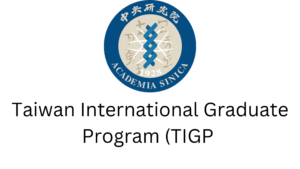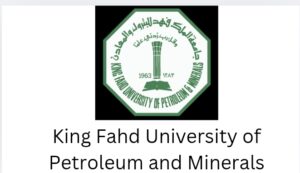
Table of Contents
Introduction to Understanding the Difference Between an Academic CV and a Regular CV
When applying for scholarships, an academic CV is usually requested among the required documents, and while applying for internships and jobs, a CV is also requested. Most people do not fully understand the differences between these two and end up mistaking one for another, hence not getting called after several applications.
When it comes to applying for jobs or academic positions, the way you present your qualifications can make a significant difference. Two primary types of documents used for this purpose are the academic CV (Curriculum Vitae) and the regular CV (often referred to as a résumé in some regions). While they may seem similar at first glance, they serve different purposes and are structured quite differently. Here’s a detailed explanation of the differences between an academic CV and a regular CV.
1. Purpose and Use
Academic CV:
An academic CV is a comprehensive document used primarily for academic positions, research roles, fellowships, grants, and other academic opportunities. It provides a detailed overview of the applicant’s academic achievements, research experience, publications, presentations, teaching experience, and other scholarly activities. The academic CV is used to demonstrate the depth and breadth of the applicant’s academic expertise and contributions to their field.
Regular CV:
A regular CV, or résumé, is typically used for job applications in the private sector, government, non-profits, and other non-academic settings. It is a concise document that highlights the applicant’s skills, work experience, education, and relevant achievements. The regular CV is tailored to the specific job and industry, focusing on the applicant’s qualifications and experience that are directly relevant to the position being applied for.
2. Length and Detail
Academic CV:
An academic CV can be quite lengthy, often ranging from several pages to even more than ten pages, depending on the applicant’s experience and accomplishments. It includes detailed descriptions of all academic and professional activities, including full lists of publications, presentations, courses taught, research projects, and professional affiliations. There is no strict length limit, as the goal is to provide a comprehensive record of the applicant’s academic career.
💬 Get Paid in Dollars Just by Chatting With Lonely People
Imagine earning daily dollar income from anywhere in the world — no degree, no experience, no interviews — just your phone or laptop.
People are getting paid simply to chat, listen, and keep others company online. This short ebook reveals:
- ✔ Legit platforms that pay in USD
- ✔ How Africans can register & withdraw successfully
- ✔ What to say to keep conversations paid
- ✔ How beginners start with zero experience
Instant download • Works worldwide • Beginner-friendly
Regular CV:
A regular CV is typically much shorter, usually one to two pages long. It focuses on summarizing the applicant’s most relevant skills, experience, and achievements in a clear and concise manner. Employers in non-academic settings often prefer shorter CVs that can be quickly reviewed, with an emphasis on brevity and relevance.
3. Structure and Content
Academic CV:
The structure of an academic CV can vary depending on the field and the specific requirements of the position, but it generally includes the following sections:
- Contact Information: Name, address, phone number, and email.
- Academic Background: Detailed information about educational qualifications, including degrees, institutions, and dates.
- Research Interests: A summary of research interests and areas of expertise.
- Teaching Experience: A comprehensive list of courses taught, including course titles, institutions, and dates.
- Research Experience: Detailed descriptions of research projects, including roles, responsibilities, and outcomes.
- Publications: A full list of published works, including books, journal articles, conference papers, and other publications.
- Presentations: A list of presentations given at conferences, seminars, and workshops.
- Grants and Awards: Information about grants, fellowships, scholarships, and other academic awards received.
- Professional Affiliations: Membership in academic and professional organizations.
- Service: Contributions to academic committees, editorial boards, and other service roles.
Regular CV:
- A regular CV is typically structured as follows:
- Contact Information: Name, address, phone number, and email.
- Professional Summary or Objective: A brief statement highlighting career goals and key qualifications.
- Work Experience: A summary of relevant work experience, including job titles, companies, locations, and dates, along with key responsibilities and achievements.
- Education: Information about educational qualifications, including degrees, institutions, and dates.
- Skills: A list of relevant skills, both technical and soft, tailored to the job.
- Certifications and Training: Any relevant certifications, licenses, or additional training.
- Achievements: Key accomplishments that demonstrate the applicant’s suitability for the role.
- Professional Affiliations: Membership in professional organizations (optional).
- References: Contact information for professional references (optional or upon request).
4. Tone and Style
Academic CV:
The tone of an academic CV is formal and detailed. It aims to provide a thorough account of the applicant’s academic journey and contributions. The language used is often technical and field-specific, reflecting the scholarly nature of the document. Clarity and precision are crucial, as the CV will be reviewed by academic peers and committees.
Regular CV:
The tone of a regular CV is professional but more concise and focused on practical achievements. It emphasizes results and impact, using clear and straightforward language. Bullet points are commonly used to highlight key information, making it easy for employers to quickly assess the applicant’s qualifications.
5. Customization
Academic CV:
While the basic structure of an academic CV remains consistent, it can be customized to highlight the most relevant experience and achievements for each application. For example, a CV submitted for a research grant might emphasize research projects and publications, while a CV for a teaching position might focus more on teaching experience and pedagogy.
Regular CV:
Customization is crucial for a regular CV. Each CV should be tailored to the specific job description, highlighting the skills and experience most relevant to the position. This often involves reordering sections, adjusting the emphasis on certain experiences, and using keywords from the job posting to align with the employer’s needs.
Conclusion
Understanding the differences between an academic CV and a regular CV is essential for effectively presenting your qualifications in different contexts. An academic CV provides a comprehensive overview of an applicant’s scholarly achievements and is used primarily in academic and research settings. In contrast, a regular CV is a concise document tailored to specific job applications in non-academic fields, focusing on relevant skills and experience. By recognizing these differences and tailoring your document accordingly, you can enhance your chances of success in your academic or professional pursuits. For more information, you can read this article by CV Pilots.
See also:
Emerging Global Leader Scholarship 2025 At American University
The University Of East Anglia Scholarships for Nigerian Students
ESIMAD Project African Scholarship 2024: Apply Now!
Google AI Essentials Course 2024 with Free Certificate
🔥 Want to Make Money Online the Right Way?
Discover how smart people are quietly earning with AI, Email Marketing, CPA, LinkedIn, Online Teaching & Content Creation.
This is not theory — it’s a step-by-step system.
👉 Get the Ebook Now











